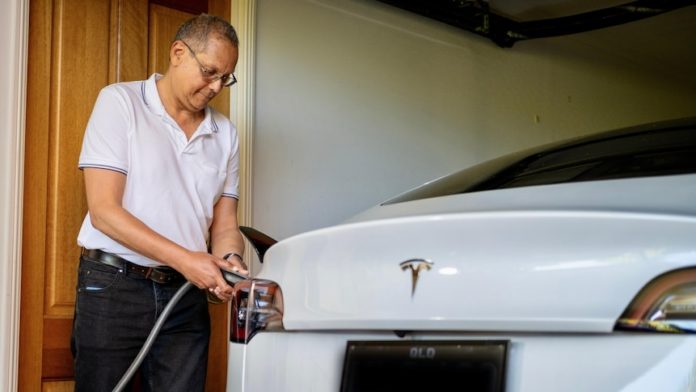They produce zero emissions and are taking off in popularity, but one problem is the power needed to charge them.
Research by the University of Queensland (UQ) suggests a change in charging behaviour is needed as more electric vehicles (EVs) take to the road.
UQ environmental economist Dr Andrea La Nauze said a lot of EV charging occurred in the evenings.
“But as we get more and more of our electricity coming from the sun, we’re going to want to shift people’s charging towards the middle of the day when we have lots of electricity available, and away from times when we all get home and switch on the TV and air conditioner.”
UQ is looking at how net zero can be reached with the help of electric vehicles if they’re charged using renewable energy — and initial research has found one group of people already making the switch to daytime charging.
“People with rooftop solar are charging a lot more during the middle of the day,” Dr La Nauze said.
“That’s really encouraging for the future of electric vehicle charging and its ability to support a renewable grid.”
‘The return on investment is much greater’
Robin Claessen and his wife are retirees who have two electric cars and rooftop solar power.
Mr Claessen plugs the cars in of a morning and lets them charge throughout the day.
“Starting at about 9am, [on a] lovely spring day like today, the solar generation is supplying the household use as well as charging one car,” he said.
“By midday, it can charge both cars.”
It also means he gets more out of his rooftop solar.
Mr Claessen said the return on investment was “much greater if we self-consume as much as we can”.
“So, the more I can plug into the car, the better it is,” he said.
“It makes more financial sense for us to use that extra solar, to put it into the car.”
However, in order for everyone to switch to daytime charging, there would need to be more charging availability, he added.
“For example, if employers can provide solar power at their workplace, then EV owners can drive to their workplaces and still charge their cars during the day,” Mr Claessen said.
“What they need is AC slow, trickle charging stations at the workplace … it can be slow, because the employee’s going to be there at their workplace for a lengthy period of time.”
UQ is looking for new ways to incentivise people to charge their EVs during the day.
Dr La Nauze said the aim of the project is to determine if electric vehicles can support the transition to a renewable electricity grid.
“It’s about charging at a time that won’t stress the grid and using the resources when they are abundant,” she said.
“We know that rooftop solar owners are already charging in the middle of the day … and the question is, can we scale that up to those owners who don’t currently have rooftop solar?”
UQ researchers are also exploring the possibility of using the power in vehicles to power homes — something the EV industry has already started planning for.
“That’s the goal; that we can use these electric vehicles as batteries on wheels to bring down the costs of the transition,” Dr La Nauze said.
“For example, it could be that your car just powers your home, it could be that your car is capable of exporting to the grid.”
Mr Claessen said he would love to be able to power his home at night using the electricity stored in his cars.
“I would love to do that: charge during the day and use it at night — perfect, absolutely,” he said.
State government pledges to install more chargers
Queensland Transport Minister Mark Bailey said the government was backing the switch to electric vehicles with discounts on purchase prices, more charging infrastructure, and direct incentives for households.
“As part of a $42 million commitment under the Queensland Energy and Jobs Plan, we will be installing more EV chargers in government buildings as well as transitioning all eligible government passenger fleet vehicles by 2026,” Mr Bailey said.
“The government is also partnering with the private sector to deliver 46 new charging stations, which is on top of the more than 50 QESH [Queensland’s Electric Super Highway] charging sites across the state.
“In addition, the Queensland Zero Emission Vehicle Rebate Scheme provides eligible Queenslanders rebates of up to $6,000 for eligible new zero-emission vehicles.”
Mr Bailey said that, as of August 29, more than 3,300 rebate applications had been completed and more than 2,500 approved.
“An insights report by Energex reveals motorists behind the wheel of electric vehicles know when to charge — they’re following the messaging around cheap tariffs and choosing the cheapest time to charge their vehicles, ” he said.
“The government is engaging with industry to support the design of a household battery program to help households harness the power of rooftop solar by installing new home batteries.”

